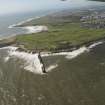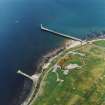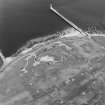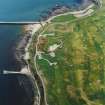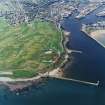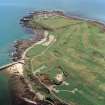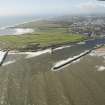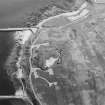Following the launch of trove.scot in February 2025 we are now planning the retiral of some of our webservices. Canmore will be switched off on 24th June 2025. Information about the closure can be found on the HES website: Retiral of HES web services | Historic Environment Scotland
Aberdeen Harbour, South Breakwater
Breakwater (Period Unassigned)
Site Name Aberdeen Harbour, South Breakwater
Classification Breakwater (Period Unassigned)
Alternative Name(s) Aberdeen Harbour Entrance
Canmore ID 104095
Site Number NJ90NE 7.05
NGR NJ 9674 0570
NGR Description NJ 9674 0570 to NJ 9674 0600
Datum OSGB36 - NGR
Permalink http://canmore.org.uk/site/104095
- Council Aberdeen, City Of
- Parish Aberdeen
- Former Region Grampian
- Former District City Of Aberdeen
- Former County Aberdeenshire
NJ90NE 7.05 9674 0570 to 9674 0600
South Breakwater [NAT]
OS (GIS) masterMap, August 2011.
Not to be confused with the Old or Inner South Breakwater (NJ 9637 0572 to NJ 9637 0581), for which see NJ90NE 7.04.
For South Breakwater, Lighthouse (NJ 9674 0600), see NJ90NE 7.06.
Built of concrete, 1870-3.
NMRS, MS/712/84.
South Breakwater. This concrete breakwater was constructed between 1869 and 1874, and is much larger than the inner breakwater (NJ90NE 7.04). It was intended to improve the harbour by sheltering the navigation channel from easterly weather.
Aberdeen City Council [2006].
Publication Account (2007)
South Breakwater
The first South Breakwater, nearly 800 ft long, was constructed under the superintendence of Gibb in consultation with Telford in 1812 to further restrict the channel and to protect the second North Pier extension. This work, which was successful, also increased the depth of the channel.
From 1870–73, as part of harbour entrance improvements, further protection from south-easterly gales was considered necessary particularly during construction of the third extension to the North Pier which was about to start.
Under Cay’s direction, a new South Breakwater was constructed of mass Portland cement concrete which in the lower part of the structure was ingeniously deposited from hoppers into bags each containing up to 100 tons ofconcrete. Above this level construction was achieved by means of large concrete blocks, the whole pier being 1050 ft long with a maximum height of 47 ft and a 62 ft high concrete lighthouse at the end. Divers prepared the sea bed before the bags were deposited. The effectiveness
of the pier during a storm in ca.1910 can be seen in the view. The seaward 500 ft of the old breakwater was removed in ca.1873.
R Paxton and J Shipway, 2007.
Reproduced from 'Civil Engineering heritage: Scotland - Highlands and Islands' with kind permission from Thomas Telford Publishers.


































